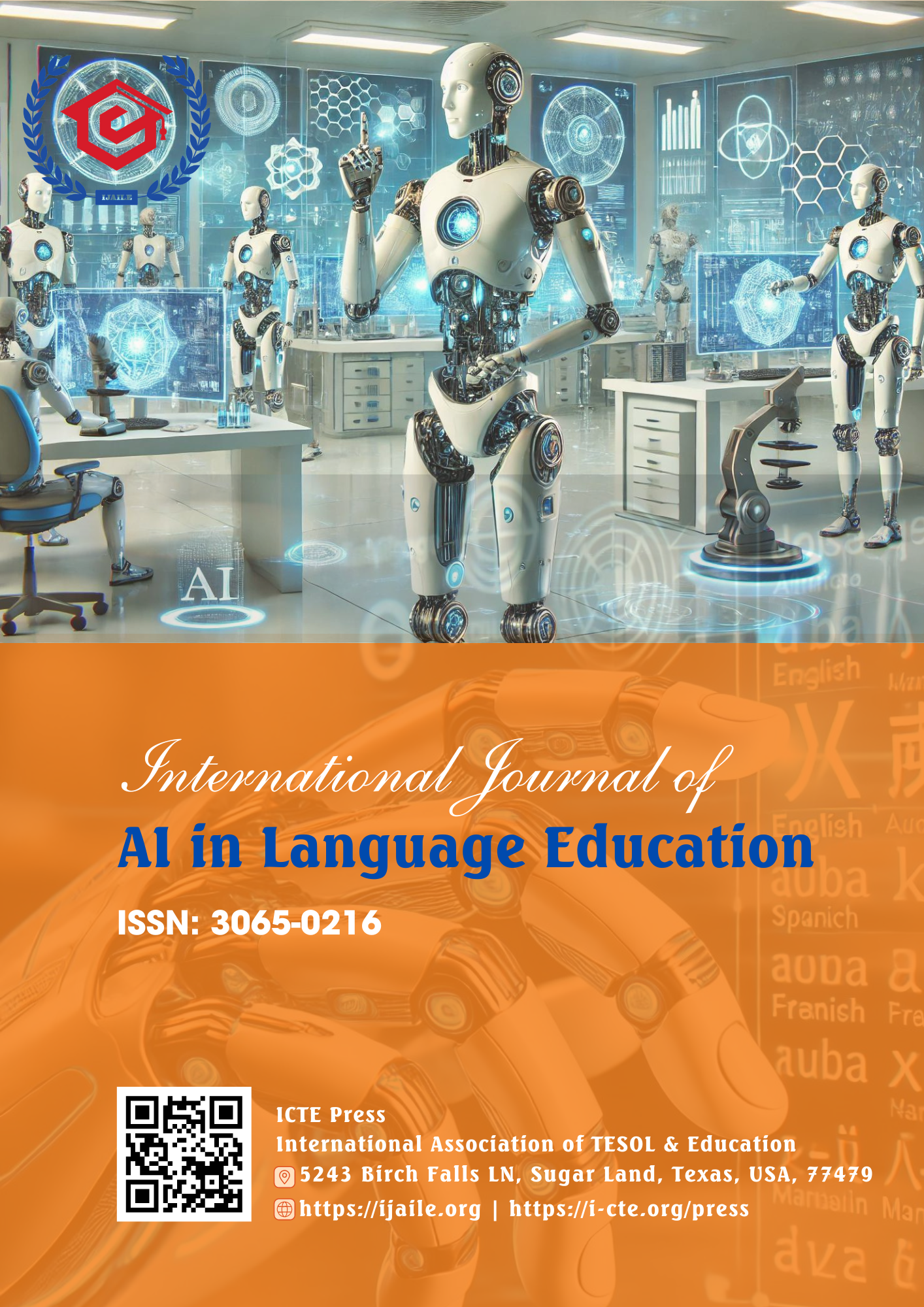MA Students’ Perceptions and Experiences with the Gemini App in English Language Learning: A Mixed-Methods Study at Van Lang University, Vietnam
DOI:
https://doi.org/10.54855/ijaile.25221Keywords:
AI in education, Gemini App, language learning, MA students, VietnamAbstract
This study explores the adoption of AI-powered tools in English language learning, addressing research gaps in localized studies on educational technology in Vietnam. The purpose is to examine MA students’ perceptions and experiences with the Gemini App at Van Lang University. Eighteen postgraduate students participated in a mixed-methods investigation, combining structured questionnaires and in-depth interviews. Findings reveal that while students appreciate the app’s accessibility and personalized feedback, concerns remain regarding its academic alignment, cultural relevance, and content accuracy. The study has implications for the local educational expectations that underlie the integration of AI and argues for tools that facilitate both autonomy and curriculum-like learning. This knowledge also complements future research trends related to AI-enhanced language instruction and provides application design ideas for culturally significant and pedagogically effective AI applications in higher education.References
Davis, F. D. (1989). Perceived Usefulness, Perceived Ease of Use, and User Acceptance of Information Technology. MIS Quarterly, 13(3), 319-340. https://doi.org/10.2307/249008 DOI: https://doi.org/10.2307/249008
Hoang, N. T., Han, D. N., & Le, D. H. (2023). Exploring Chatbot AI in improving vocational students’ English pronunciation. AsiaCALL Online Journal, 14(2), 140-155. DOI: https://doi.org/10.54855/acoj.231429 DOI: https://doi.org/10.54855/acoj.231429
Huynh, Q. Q. (2024). A Literature Review on EFL Students’ Integration of AI-Based Tools in English Learning and The Perceived Impact on Autonomy. International Journal of AI in Language Education, 1(2), 30-51. DOI: https://doi.org/10.54855/ijaile.24123 DOI: https://doi.org/10.54855/ijaile.24123
Imran, M., & Almusharraf, N. (2024). Google Gemini as a next generation AI educational tool: A review of emerging educational technology. Smart Learning Environments, 11(22). DOI: https://doi.org/10.1186/s40561-024-00310-z DOI: https://doi.org/10.1186/s40561-024-00310-z
Kimberlin, C. L., & Winterstein, A. G. (2008). Validity and reliability of measurement instruments used in research. American journal of health-system pharmacy, 65(23), 2276-2284. DOI: https://doi.org/10.2146/ajhp070364 DOI: https://doi.org/10.2146/ajhp070364
Kulaksız, G. C. (2024). Artificial intelligence-based language modelling: The effect of ChatGPT application on writing skills in the context of teaching English as a foreign language. https://hdl.handle.net/11452/49231
Nguyen, H. A. (2024). Harnessing AI-Based Tools for Enhancing English Speaking Proficiency: Impacts, Challenges, and Long-Term Engagement. International Journal of AI in Language Education, 1(2), 18-29. DOI: https://doi.org/10.54855/ijaile.24122 DOI: https://doi.org/10.54855/ijaile.24122
Nguyen, T., & Pham, V. P. H. (2024). AI Chatbots for Language Practices. International Journal of AI in Language Education, 1(1), 56-67. DOI: https://doi.org/10.54855/ijaile.24115 DOI: https://doi.org/10.54855/ijaile.24115
Lee, G. G., Latif, E., Shi, L., & Zhai, X. (2023). Gemini pro defeated by GPT-4V: Evidence from education. arXiv preprint arXiv:2401.08660. DOI: https://doi.org/10.48550/arXiv.2401.08660
Marikyan, D., & Papagiannidis, S. (2024). Technology acceptance model: A review. TheoryHub book. https://doi.org/10.4236/ce.2024.1511143 DOI: https://doi.org/10.4236/ce.2024.1511143
Ozfidan, B., El-Dakhs, D. A. S., & Alsalim, L. A. (2024). The Use of AI Tools in English Academic Writing by Saudi Undergraduates. Contemporary Educational Technology, 16(4). https://doi.org/10.30935/cedtech/15013 DOI: https://doi.org/10.30935/cedtech/15013
Perera, P., & Lankathilaka, M. (2023). Preparing to revolutionize education with the multi-model GenAI tool Google Gemini? A journey towards effective policy making. Journal of Advances in Education and Philosophy, 7(8), 246–253. https://doi.org/10.36348/jaep.2023.v07i08.001 DOI: https://doi.org/10.36348/jaep.2023.v07i08.001
Piaget, J. (1954). The Construction of Reality in the Child. Basic Books. DOI: http://dx.doi.org/10.1037/11168-000 DOI: https://doi.org/10.1037/11168-000
Rogers, E. M. (2003). Diffusion of Innovations (5th ed.). Free Press. DOI: https://doi.org/10.1016/j.jmig.2007.07.001 DOI: https://doi.org/10.1016/j.jmig.2007.07.001
Team, G., et al. (2023). Gemini: A family of highly capable multimodal models. arXiv preprint arXiv:2312.11805. DOI: https://doi.org/10.48550/arXiv.2312.11805
Venkatesh, V., Morris, M. G., Davis, G. B., & Davis, F. D. (2003). User Acceptance of Information Technology: Toward a Unified View. MIS Quarterly, 27(3), 425-478. DOI: https://doi.org/10.2307/30036540 DOI: https://doi.org/10.2307/30036540
Waziana, W., Andewi, W., Hastomo, T., & Hasbi, M. (2024). Students' Perceptions about the Impact of AI Chatbots on their Vocabulary and Grammar in EFL Writing. Register Journal, 17(2), 352-382. DOI: https://doi.org/10.18326/register.v17i2.352-382
Downloads
Published
Issue
Section
License
Copyright (c) 2025 Nguyen Hoang Anh (Author)

This work is licensed under a Creative Commons Attribution 4.0 International License.












